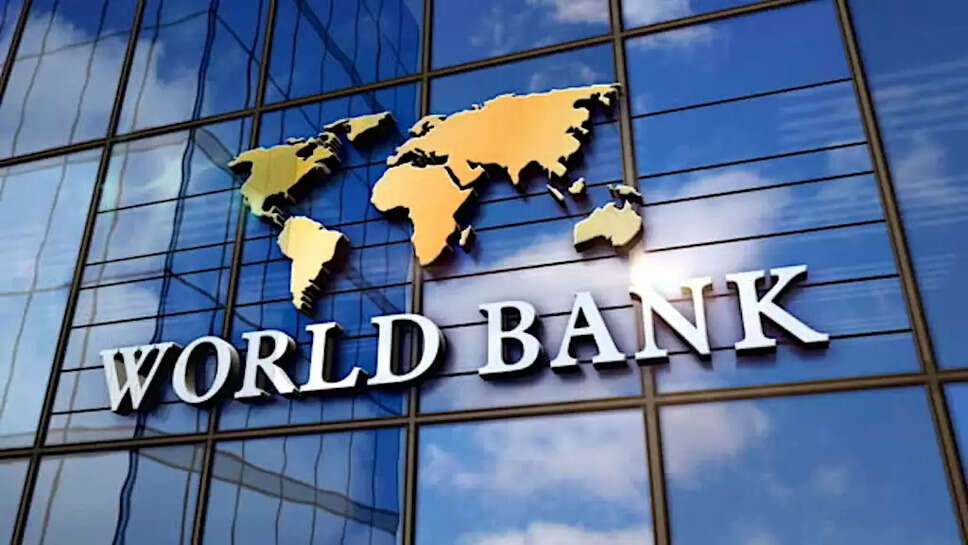Urban India Faces $5 Billion Annual Flood Losses Amid Rapid Growth

As India strides toward becoming a $5 trillion economy, its cities are poised to play a pivotal role in powering that growth. By 2030, urban centers are expected to generate a staggering 70% of all new jobs. However, this rapid urban expansion comes with a critical caveat: rising climate risks, particularly floods, which could cost Indian cities an estimated $5 billion annually if adequate resilience measures are not adopted.
Job Boom Ahead, but Flood Risks Could Derail Urban Growth
India's urban landscape is undergoing a dramatic transformation. The surge in migration from rural to urban areas is creating a demographic shift that offers both opportunity and challenge. As more people settle in cities in search of better livelihoods, urban areas are emerging as the primary hubs for economic development. This influx is expected to spark a boom in employment opportunities across sectors like infrastructure, services, logistics, tech, and manufacturing.
However, the very growth that fuels prosperity may also intensify vulnerabilities. The increasing density of population, unplanned infrastructure, and outdated drainage systems make cities hotspots for climate-induced disasters, especially floods. Without targeted investments in urban resilience, these threats could not only disrupt lives but also severely impact productivity and economic output.
Autonomy Is Key: Cities Must Be Empowered to Act Swiftly
A major concern flagged in the report is the limited autonomy Indian cities possess in decision-making. Despite their economic importance, most municipal bodies remain heavily dependent on state and central governments for funding and policy direction. This often leads to delays in implementing urgent climate resilience measures.
Greater financial and administrative autonomy can enable local bodies to respond to climate threats more effectively. For example, municipal corporations could be granted direct access to climate finance, allowed to float green bonds, or empowered to approve zoning regulations that factor in environmental sustainability. A decentralized approach to urban governance would be instrumental in building city-specific climate adaptation strategies.
Floods: The Most Expensive Threat Looming Over Cities
Among all the climate-related risks, floods have emerged as the most frequent and costly disasters facing urban India. From Mumbai to Chennai and Guwahati to Gurugram, flash floods have paralyzed daily life and caused billions in damages. As monsoon patterns become increasingly erratic and extreme weather events more common, the need for robust flood-management systems becomes critical.
Many cities still rely on outdated drainage systems designed during colonial times, with little capacity to handle today’s rainfall volumes. Illegal construction over wetlands, encroachment of riverbanks, and poor waste management further clog stormwater pathways. Consequently, even moderate rain often results in severe urban flooding.
Technology and Infrastructure: The Need of the Hour
To address urban flood risks, cities must invest in modern infrastructure and smart technologies. Solutions like real-time flood forecasting systems, AI-powered water level sensors, and smart stormwater drains can help mitigate damage. Simultaneously, urban planning must shift toward nature-based solutions, such as restoring wetlands, promoting green roofs, and expanding tree cover to absorb excess rainwater.
Infrastructure upgrades, while expensive, should be viewed as investments rather than expenditures. Every dollar spent on disaster resilience is likely to save multiple dollars in future recovery and repair costs. Moreover, modern flood-resistant infrastructure can attract private investment, boost citizen confidence, and enhance overall quality of life.
Climate Migration and Job Fragility
One emerging concern is the phenomenon of climate migration. As floods and other environmental threats increase, certain urban neighborhoods may become uninhabitable, forcing people to relocate. This not only disrupts lives but also destabilizes local economies and labor markets. Daily wage earners, small business owners, and informal sector workers are particularly vulnerable, as they often lack the safety nets needed to recover from disasters.
As jobs increasingly concentrate in cities, any disruption to urban labor markets can ripple through the national economy. Policymakers must, therefore, adopt an inclusive approach to urban development—one that safeguards the livelihoods of the most vulnerable while reinforcing urban infrastructure.
Cities as Climate Leaders: From Passive Victims to Active Solutions
Indian cities must transition from being passive victims of climate change to active drivers of climate solutions. They have the potential to set national examples through innovative urban design, emission control, and sustainable mobility. Urban transport networks, for instance, can be decarbonized by investing in electric buses and metro lines. Building codes can mandate energy-efficient construction, and waste segregation policies can reduce landfill emissions.
Public participation is also key. Local communities must be engaged in climate resilience efforts, from awareness drives to neighborhood-level flood prevention projects. When citizens feel empowered to take part, adaptation measures are more likely to succeed and sustain over time.
Green Financing and Global Partnerships
To support the mammoth task of climate-proofing urban India, access to global green financing is essential. Multilateral agencies, development banks, and private investors are increasingly prioritizing projects that align with sustainability goals. Indian cities must actively seek such funding to implement climate adaptation projects. Carbon credit markets, ESG investment frameworks, and public-private partnerships can also provide critical capital.
But finance alone isn’t enough. Indian cities can benefit from international knowledge-sharing platforms, where best practices in urban resilience, climate risk mapping, and disaster response can be learned and localized.
Policy Reforms: Building an Urban Climate Resilience Framework
India needs a comprehensive urban climate resilience framework that connects national objectives with local implementation. The policy should set clear guidelines on land use, water conservation, waste management, and infrastructure standards that incorporate climate sensitivity. States must be encouraged to devolve powers to municipalities, while central support can focus on capacity-building and fiscal incentives.
Programs like smart cities, AMRUT, and Jal Shakti Abhiyan can be repurposed with a stronger climate lens. Moreover, urban data systems need to be enhanced so cities can track risks, measure performance, and adjust policies in real-time.
The Race Against Time
India’s urban future holds tremendous promise. With cities poised to become the backbone of economic development and employment generation, the stakes have never been higher. However, climate risks—especially floods—pose an existential threat to that vision.
Balancing growth with resilience requires bold action today. Empowering cities with the autonomy, finance, and tools they need will not only safeguard lives and livelihoods but also ensure that India’s urban renaissance is both inclusive and sustainable. The clock is ticking, and the future will belong to the cities that are prepared.
